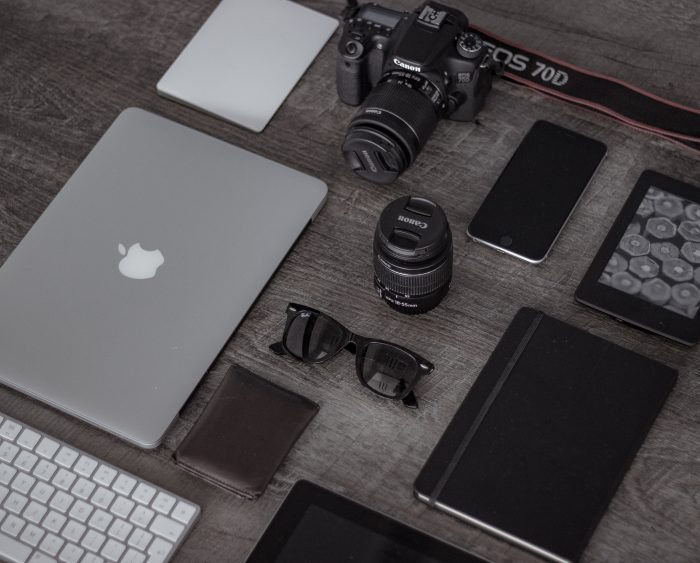How to Retain More of Every Book You Read
Finishing a book is easy. Understanding it is harder.
In recent years, I have focused on building good reading habits and learned how to read more. But the key is not simply to read more, but to read better. For most people, the ultimate goal of reading a nonfiction book is to actually improve your life by learning a new skill, understanding an important problem, or looking at the world in a new way. It’s important to read books, but it is just as important to remember what you read and put it to good use.
With that in mind, I’d like to share three reading comprehension strategies that I use to make my reading more productive.

1. Make all of your notes searchable.
Having searchable book notes is essential for returning to ideas easily. It increases the odds that you will apply what you read in real life. An idea is only useful if you can find it when you need it. There is no need to leave the task of reading comprehension solely up to your memory.
I store all of my book notes in Evernote. I strongly prefer Evernote over other options because 1) it is searchable, 2) it is easy to use across multiple devices, and 3) you can create and save notes even when you’re not connected to the internet. I get my book notes into Evernote in three ways.
First, if I am listening to an audiobook then I create a new note for that book and type my notes in as I listen. My preference is to listen to audiobooks on 1.25x speed and then press pause whenever I want to write something down. The faster playback speed and slower note taking process tend to balance out and I usually finish each book in the same time as normal.
Second, if I am reading a print book then I follow the same process with one change. Typing notes while reading a print book can be annoying because you are always putting the book down and picking it back up. I like to place the book on a book stand, which makes it much easier to type out a long quote or keep my hands free while reading.
Print books and audiobooks are great, but where this system really shines is with ebooks. My third (and preferred) approach is to read ebooks on my Kindle Paperwhite. I can easily highlight a passage while reading on my Kindle—no typing required. Once I’m finished, I use a software program called Clippings to import all of my Kindle highlights to Evernote.
These three approaches make it fairly easy for me to get my book notes into Evernote where they will be instantly searchable. Even if I can’t remember where I read about a particular idea, I can usually search my Evernote folder and find the answer quickly.
2. Integrate thoughts as you read.
When you go to the library, all of the books will be divided into different categories: biographies, history, science, psychology. In the real world, of course, knowledge is not separated into neatly defined boxes. Topics overlap and bleed into one another. All knowledge is interconnected.
The most useful insights are often found at the intersection of ideas.
The most useful insights are often found at the intersection of ideas. For that reason, I try to consider how the book I’m reading connects with all of the ideas that are already knocking around inside my head. Whenever possible, I try to integrate the lessons I’m learning with previous ideas.
For example:
- While reading The Tell-Tale Brain by neuroscientist V.S. Ramachandran, I discovered that one of his key points connected to a previous idea I learned from social work researcher Brene Brown.
- In my notes for The Subtle Art of Not Giving a F*ck, I noted how Mark Manson’s idea of “killing yourself” overlaps with Paul Graham’s essay on keeping your identity small.
- As I read Mastery by George Leonard, I realized that while this book was about the process of improvement, it also shed some light on the connection between genetics and performance.
I added each insight to my notes for that particular book. This process of integration and connection is crucial not only for making new ideas “stick” in your brain, but also for understanding the world as a whole.
Too often, people use one book or one article as the basis for an entire belief system. Forcing yourself to connect ideas helps you realize that there is no single way of looking at the world. The complex connections between ideas are often where the most beautiful bits of knowledge reside.
3. Summarize the book in one paragraph.
As soon as I finish a book, I challenge myself to summarize the entire text in just three sentences. This constraint is just a game, of course, but I do find it to be a useful exercise because it forces me to review my notes and consider what was really important about the book.
How would I describe the book to a friend? What are the main ideas? If I was going to implement one idea from the book right now, which one would it be?
In many cases, I find that I can usually get just as much useful information from reading my one-paragraph summary and reviewing my notes as I would if I read the entire book again. (There is a lot of fluff in non-fiction books these days.)
I have published many of my book summaries, which include my one paragraph summary and my full notes. If you’re looking for an idea of what these reading comprehension strategies look like in practice, feel free to browse that page.
Happy reading!
